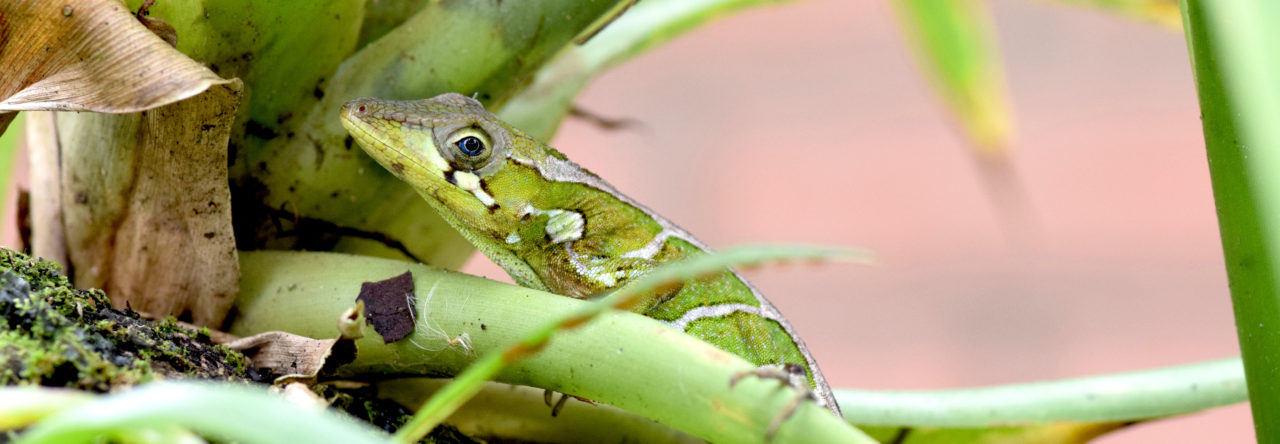There is considerable variation in phallus morphology among the major groups of amniotes (phallus used herein to be inclusive of both the penis and clitoris). Just for starters, while most clades – including mammals, birds, turtles, and crocodilians – have a single midline phallus, squamates have paired hemiphalluses. Although herpetologists have long appreciated morphological variation in the hemipenis for its systematic value, understanding the nuances of anatomical homology, homoplasy, and novelty at this larger scale has not been as widely addressed. Recently, the Cohn lab of the University of Florida (of which I am now a member) undertook this challenge from a developmental perspective, studying development of external genitalia in representatives of each reptilian clade: the ball python (Python regius), the pond slider (Trachemys scripta), three duck species, the American alligator (Alligator mississippiensis), and who else, but the green anole (Anolis carolinensis). A synthetic review of the complete series will have to wait for another post, but reprints of each paper are available on the lab’s website to hold over the most curious. But because of the growing interest in anole nether regions, I will briefly highlight the recent findings regarding hemiphallus development in the green anole.
The Wade lab has previously shown that both male and female green anoles develop similar hemiphalluses during the early stages of genital morphogenesis, which then later differentiate into sex-specific reproductive structures. Building upon this observation, Gredler et al. described the embryology of the green anole hemiphallus from the earliest stages of morphogenesis through sexual differentiation. Hemiphallus development begins around the time of oviposition when three sets of paired swellings appear between the cloaca and the developing hindlimb bud, reminiscent of what is observed in other amniote clades. These swellings expand and meet at the midline to form the external lips of the cloaca or remain lateral to the cloaca and mature into the hemiphalluses. Following morphogenesis, the male hemipenis continues to elongate as it forms its distinctive lobes and sulcus spermaticus while the female hemiclitores gradually regress into the cloaca. Further details of the developmental anatomy of internal reproductive structures and gene expression patterns of several key molecules associated with genital morphogenesis are described in the paper.

Fig. 4 of Gredler et al. illustrating sexual differentiation of the hemiphalluses. Red arrow highlights the formation of the sulcus spermaticus.
Although there is some variation among squamates in the relative timing of the emergence and fusion of the paired swellings associated with hemiphallus development, these results are largely consistent with classical embryological descriptions of squamate genitalia (summarized by Raynaud and Pieu in Biology of the Reptila volume 15). But the revival of this body of literature in a comparative and molecular context brings new research questions to our collective table. As discussed by Gredler et al., the seemingly modular relationship between the genital swellings, cloaca, and limb buds may be particularly interesting in the context of repeated body elongation and limb loss among squamates. Better understanding of the relationship between cloacal and phallus development may also shed new light on the mechanisms of reproductive isolation, the coevolution of male and female reproductive organs, and evolving patterns of sexual conflict. Furthermore, there remain open many mechanistic questions regarding the molecular patterning of the hemiphalluses and which processes are hormone dependent that can now be more thoroughly addressed using the newly available sex-specific molecular markers. Considering the growing literature on hemipenis variation and expanding access to genomic resources in Anolis, these may be particularly fruitful areas for future investigation.
- Short Faces, Two Faces, No Faces: Lizards Heads Are Susceptible to Embryonic Thermal Stress - December 15, 2021
- The Super Sticky Super Power of Lizards: a New Outreach Activity for Grade-Schoolers - April 9, 2018
- Updates on the Development of Anolis as a “Model Clade” of Integrative Analyses of Anatomical Evolution - September 4, 2017



Doug Menke
Really fascinating work!